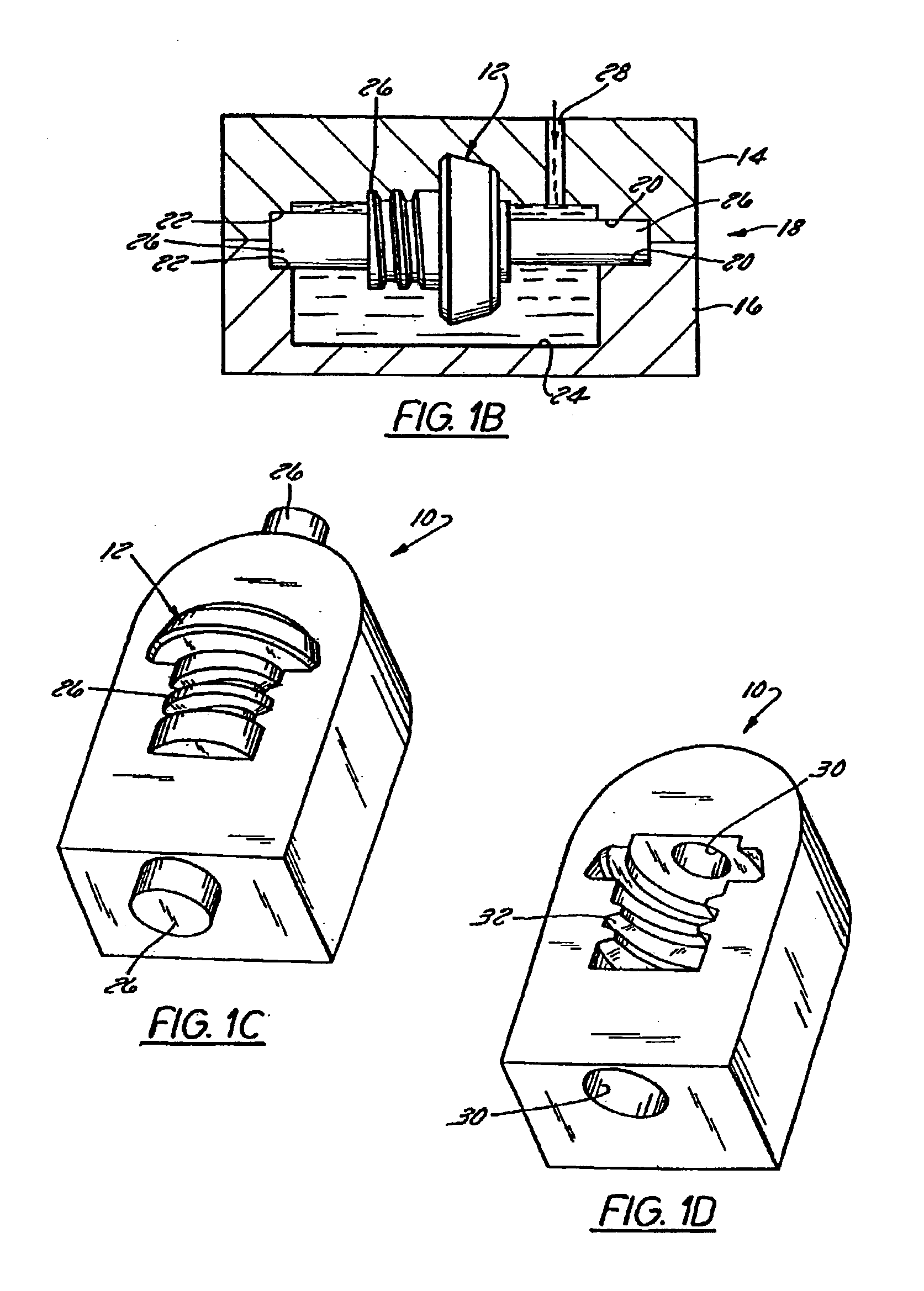Method of making precision castings using thixotropic materials
a technology of thixotropic materials and precision castings, applied in the field of precision casting processes, can solve the problems of difficult to meet the requirements of casting parts, threads, bores, undercuts, etc., and achieve the effect of high repeatability
- Summary
- Abstract
- Description
- Claims
- Application Information
AI Technical Summary
Benefits of technology
Problems solved by technology
Method used
Image
Examples
Embodiment Construction
[0035]1. Resume
[0036]Pursuant to the invention, precision castings such as brake calipers and other cast metal parts requiring a fine finish and having complex internal geometries can be produced by casting a shot of a semi-solid thixotropic metal alloy within or about a melt-away metal component in the form of a core and / or a die insert having a lower melting point than the solid-to-semi-solid transition temperature of the thixotropic alloy. The thixotropic alloy may be cast, e.g., by thixocasting, rheocasting, or sub-liquidus casting, or any other semi solid casting method. Then, after the shot solidifies to form a casting with a captured core and / or insert, the melt-away component is melted from the casting in a liquid bath, in an air furnace, or during other heat treatment of the casting. The process dramatically reduces or even eliminates machining requirements for cast metal parts because the inner surface of the casting is of extremely low porosity and meets stringent toleran...
PUM
| Property | Measurement | Unit |
|---|---|---|
| Fraction | aaaaa | aaaaa |
| Fraction | aaaaa | aaaaa |
| Dimensionless property | aaaaa | aaaaa |
Abstract
Description
Claims
Application Information
 Login to View More
Login to View More - R&D
- Intellectual Property
- Life Sciences
- Materials
- Tech Scout
- Unparalleled Data Quality
- Higher Quality Content
- 60% Fewer Hallucinations
Browse by: Latest US Patents, China's latest patents, Technical Efficacy Thesaurus, Application Domain, Technology Topic, Popular Technical Reports.
© 2025 PatSnap. All rights reserved.Legal|Privacy policy|Modern Slavery Act Transparency Statement|Sitemap|About US| Contact US: help@patsnap.com



